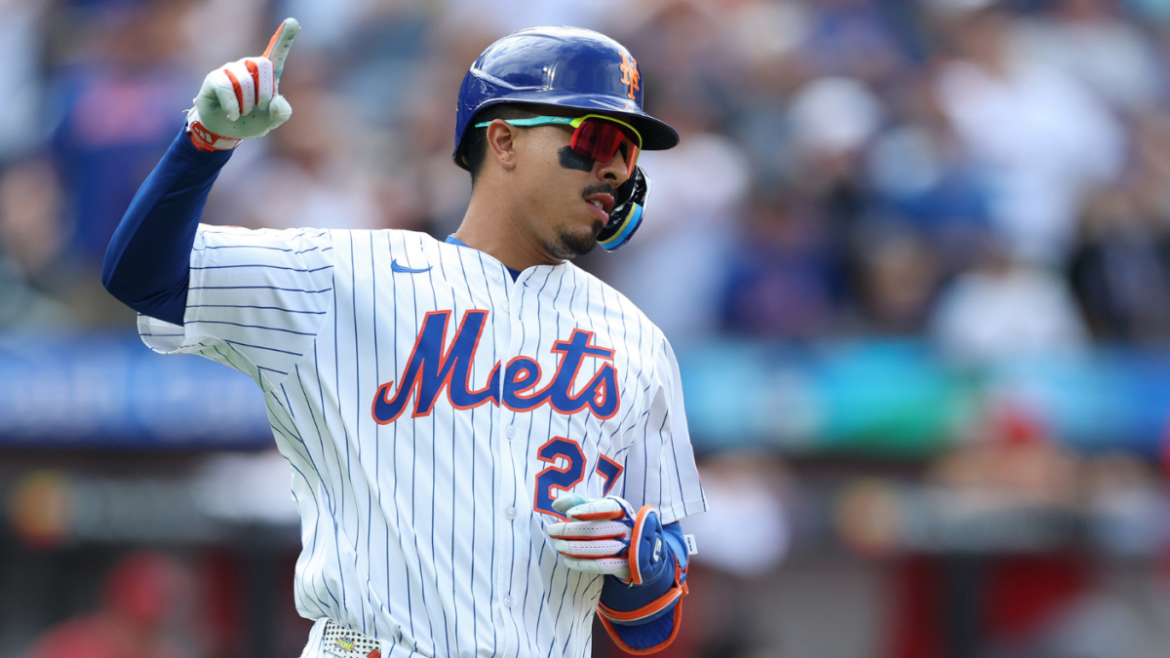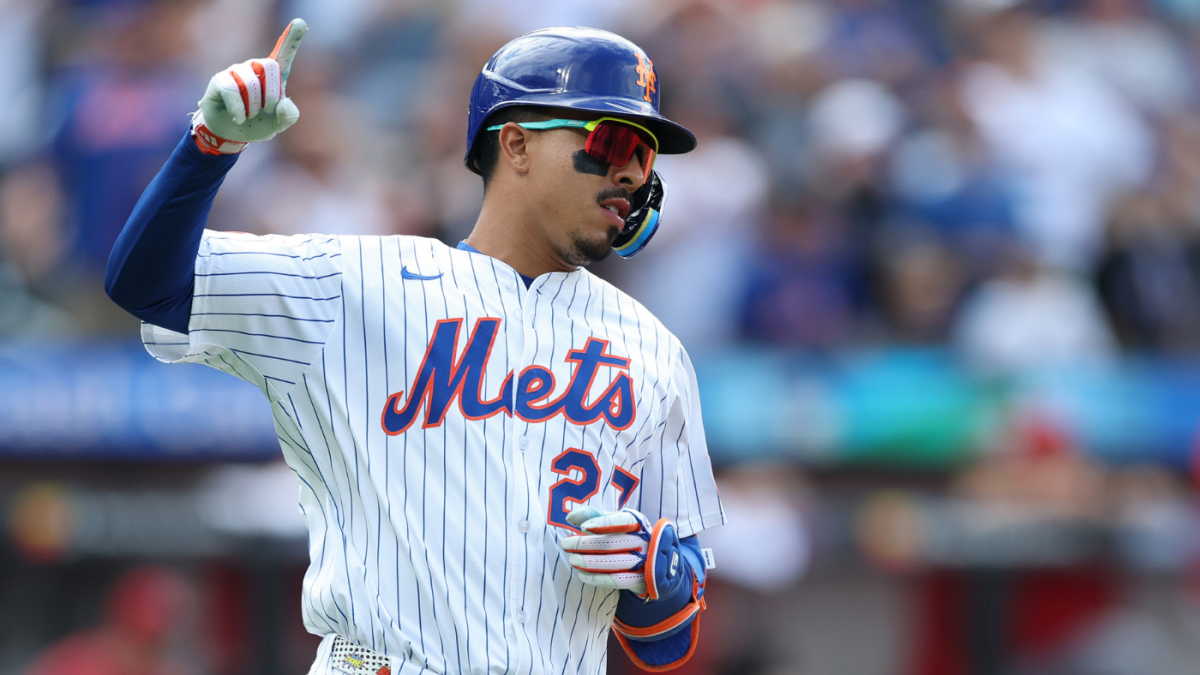The 2025 MLB Trade Deadline: A Strategic Crossroads
The 2025 MLB trade deadline is not just another date on the calendar; it’s a pivotal moment that can redefine the trajectory of franchises, alter playoff races, and set the stage for future success. As teams navigate the delicate balance between immediate contention and long-term sustainability, the decisions made in the weeks leading up to July 31st will echo through the league for years to come. This year’s deadline is particularly intriguing, with several high-profile teams facing critical decisions that could reshape the competitive landscape.
The Mets: A Delicate Balancing Act
The New York Mets find themselves at a familiar crossroads, a position that has become all too common in recent years. After a disappointing June, the team is under immense pressure to make impactful moves that could either propel them into playoff contention or signal a shift toward a rebuild. The Mets’ front office is facing a dilemma: do they commit to a “win-now” strategy by acquiring high-impact players, or do they prioritize the future by trading established veterans for prospects?
Reports suggest that the Mets are open to moving several key players, including starting pitcher Luis Severino, who has attracted interest from multiple contenders. Severino’s experience and proven track record make him an attractive target for teams looking to bolster their rotations. However, the Mets are also exploring potential acquisitions, with Pirates starter Mitch Keller reportedly on their radar. This dual approach highlights the uncertainty surrounding the Mets’ direction, leaving fans and analysts speculating about their ultimate strategy.
One area of focus for the Mets could be their bullpen, which has shown signs of inconsistency. Reuniting with veteran reliever David Robertson, whom they traded away in 2023, could provide the stability and experience needed to solidify the late innings. Alternatively, the Mets could opt for a more aggressive approach, targeting multiple upgrades in both pitching and offense to make a serious playoff push. Ultimately, the Mets’ strategy will hinge on their performance in the weeks leading up to the deadline. A strong showing could incentivize them to go all-in, while continued struggles might lead to a more measured approach focused on acquiring future assets.
The Cubs: A Championship Window
The Chicago Cubs have exceeded expectations this season, positioning themselves as legitimate contenders for a World Series title. However, to capitalize on this opportunity, they must make strategic moves at the trade deadline to address key areas of need. The Cubs’ front office is expected to be active in the trade market, targeting players who can elevate their roster to championship caliber.
One of the Cubs’ primary focuses is upgrading their third base position. The team is reportedly eyeing an upgrade at the hot corner, seeking a player who can provide both offensive firepower and defensive stability. Additionally, the Cubs are likely to target a starting pitcher to bolster their rotation. While a true ace may be out of reach, acquiring a No. 2 or No. 3 starter would provide valuable depth and insurance for a potential playoff run.
The Cubs may also explore trades to enhance their lineup, particularly in the outfield and designated hitter positions. Adding a proven run producer could give the Cubs the offensive boost they need to compete with the league’s top teams. The deadline presents a unique opportunity for the Cubs to solidify their status as contenders and take a significant step toward their ultimate goal: bringing a World Series title to Chicago.
The Athletics: A Rebuild in Progress
In stark contrast to the Mets and Cubs, the Oakland Athletics are firmly entrenched in a rebuild. As such, they are expected to be active sellers at the trade deadline, offering up valuable players in exchange for prospects and future assets. The Athletics’ front office is focused on stockpiling young talent and building a foundation for sustained success, a strategy that requires patience and a long-term vision.
Several Athletics pitchers are expected to draw significant interest from contending teams, including right-hander Luis Severino and left-handers JP Sears and Jeffrey Springs. These pitchers offer a mix of experience and potential, making them attractive targets for teams looking to bolster their rotations or bullpens. By trading away established players, the Athletics aim to replenish their farm system and position themselves for future competitiveness.
The Athletics’ approach is a stark reminder that success in Major League Baseball is not always measured in immediate wins and losses. Sometimes, the most impactful moves are those that prioritize the future over the present. The Athletics’ willingness to part with valuable assets is a testament to their commitment to building a championship-caliber team, even if it means enduring short-term struggles.
Bubble Teams: A Defining Moment
Beyond the clear contenders and sellers, several “bubble teams” find themselves at a critical juncture as the trade deadline approaches. These teams, hovering around .500, must decide whether to make a push for the playoffs or to concede the season and focus on rebuilding. The decision to buy or sell can have a profound impact on a team’s future, shaping their trajectory for years to come.
For teams on the cusp of contention, the trade deadline presents a unique opportunity to make a statement. Aggressively pursuing upgrades can provide a short-term boost, potentially propelling a team into the playoffs and setting the stage for a deep postseason run. However, this approach also comes with risks, as trading away valuable prospects can mortgage the future in pursuit of immediate success.
Conversely, teams that opt to sell off assets can replenish their farm systems and position themselves for long-term success. This strategy requires patience and a willingness to endure short-term struggles, but it can ultimately lead to sustained competitiveness. The performance of these bubble teams in the weeks leading up to the deadline will ultimately determine their approach. A strong showing could incentivize them to buy, while continued struggles might lead to a more pragmatic decision to sell.
Key Players on the Move
Several high-profile players are expected to be on the move at the trade deadline, drawing interest from multiple contending teams. These players possess the talent and experience to significantly impact a team’s chances of reaching the playoffs and contending for a World Series title. The trade market is expected to be particularly active, with several notable names potentially changing teams.
One of the most coveted players on the market is center fielder Luis Robert Jr. Robert Jr. is a dynamic player with exceptional power and speed, making him a valuable addition to any lineup. Several teams are expected to pursue Robert Jr., setting up a potentially fierce bidding war. His combination of offensive firepower and defensive excellence makes him a prized commodity in the trade market.
In addition to Robert Jr., several starting pitchers could be on the move, including Jesús Luzardo of the Marlins, Garrett Crochet of the White Sox, and Erick Fedde of the White Sox. These pitchers offer a mix of talent and potential, making them attractive targets for teams seeking to bolster their rotations. The trade deadline is a prime opportunity for contenders to acquire the pitching depth they need to compete in the postseason.
The Deadline’s Ripple Effect
The MLB trade deadline is more than just a date on the calendar; it’s a catalyst for change, a moment where the balance of power can shift dramatically. The moves made in the days leading up to July 31st can have a ripple effect throughout the league, impacting playoff races and shaping the future of numerous franchises.
Teams that make shrewd acquisitions can vault themselves into contention, while those that stand pat or make ill-advised trades risk falling behind. The trade deadline is a high-stakes game, where every decision is scrutinized and the consequences can be significant. The decisions made by teams in the coming weeks will not only determine their fate this season but also shape their long-term trajectory.
Conclusion: A Season Defined
As the 2025 MLB trade deadline approaches, the stage is set for a period of intense activity and strategic maneuvering. The decisions made by teams in the coming weeks will not only determine their fate this season but also shape their long-term trajectory. For the Mets, the deadline represents a critical juncture, a moment to decide whether to chase immediate success or to prioritize building for the future. For the Cubs, it’s an opportunity to solidify their status as contenders and make a serious run at the World Series. And for the Athletics, it’s a chance to replenish their farm system and lay the foundation for future competitiveness.
The 2025 MLB trade deadline promises to be a defining moment for several teams, a time of both opportunity and uncertainty. As the clock ticks down to July 31st, all eyes will be on the transactions, the rumors, and the ultimate outcomes that will shape the landscape of Major League Baseball. The decisions made in the coming weeks will echo through the league, altering playoff races, reshaping rosters, and setting the stage for future success. The trade deadline is not just a date on the calendar; it’s a pivotal moment that can redefine the trajectory of franchises and shape the future of the game.





